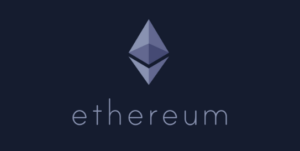In recent years, the cryptocurrency market has been booming, with more and more people investing in digital assets like Ethereum. However, there has been growing concern about the environmental impact of cryptocurrencies, especially the energy-intensive process of mining. In response to these concerns, the Ethereum development team has announced a major overhaul aimed at reducing the environmental impact of the popular cryptocurrency.
The main focus of the Ethereum crypto overhaul is to transition from proof-of-work (PoW) to a proof-of-stake (PoS) consensus mechanism. This shift is expected to significantly reduce the energy consumption associated with mining Ethereum. Unlike PoW, where miners compete to solve complex mathematical puzzles to validate transactions and create new blocks, PoS relies on validators who are chosen to create new blocks based on the amount of cryptocurrency they hold and are willing to “stake” as collateral.
By moving to a PoS system, Ethereum is aiming to make the network more energy-efficient and environmentally friendly. This transition is not only beneficial for the environment but also for the scalability and security of the Ethereum network. PoS requires far less computational power compared to PoW, making it a more sustainable option in the long run.
Another key aspect of the Ethereum crypto overhaul is the implementation of Ethereum 2.0, also known as Serenity. This upgrade is set to bring a host of improvements to the Ethereum network, including increased transaction throughput, lower fees, and enhanced security. Ethereum 2.0 will be rolled out in multiple phases, with each phase introducing new features and enhancements to the network.
One of the most anticipated features of Ethereum 2.0 is the introduction of shard chains. Shard chains are smaller, parallel chains that will help increase the overall scalability of the Ethereum network by processing transactions in parallel. This will result in faster transaction speeds and lower fees, making Ethereum a more practical choice for everyday transactions.
Furthermore, Ethereum 2.0 will also introduce a new virtual machine called eWASM (Ethereum flavored WebAssembly). eWASM will replace the current EVM (Ethereum Virtual Machine) and offer better performance and efficiency for executing smart contracts on the Ethereum network. This upgrade will not only enhance the speed and efficiency of dApps (decentralized applications) running on Ethereum but also attract more developers to build on the platform.
Overall, the Ethereum crypto overhaul targeting environmental impact signifies a positive step towards a more sustainable and efficient cryptocurrency ecosystem. By transitioning to a PoS consensus mechanism and introducing Ethereum 2.0, Ethereum is set to become a more energy-efficient, scalable, and secure platform for users and developers alike. Stay tuned for more updates on the Ethereum network as these changes are implemented in the coming months.

